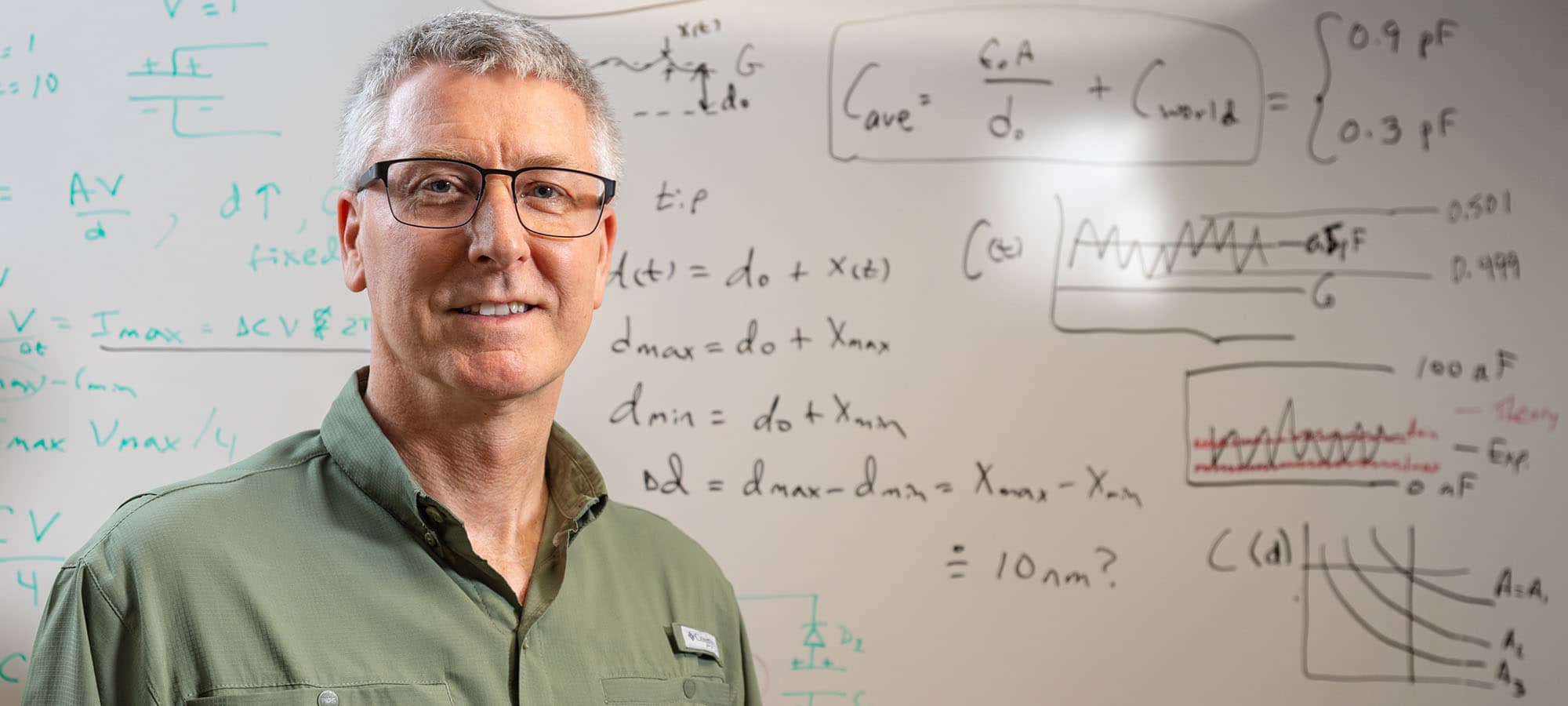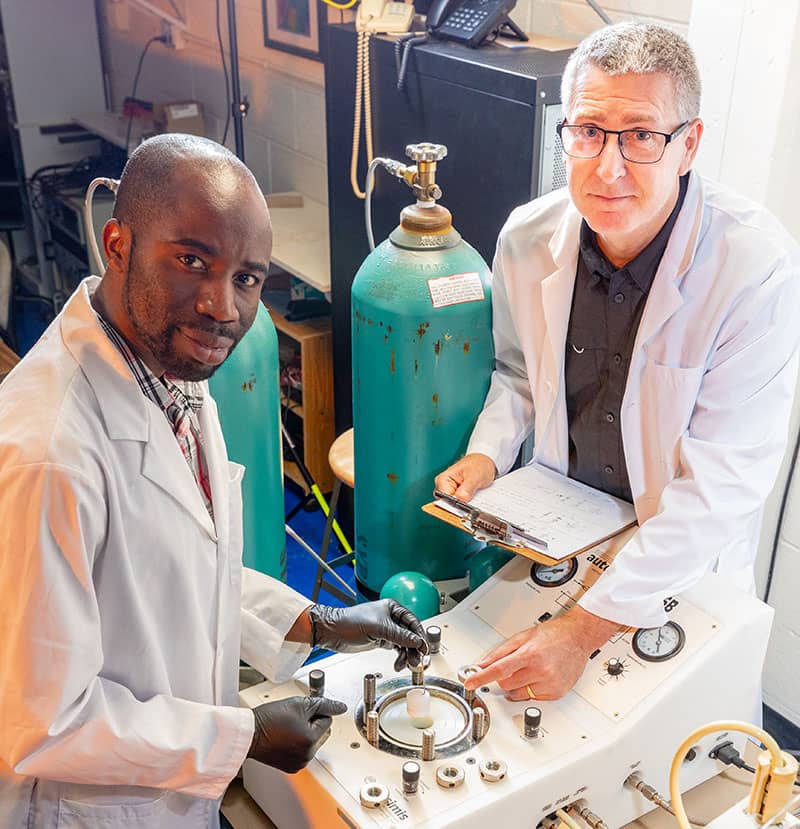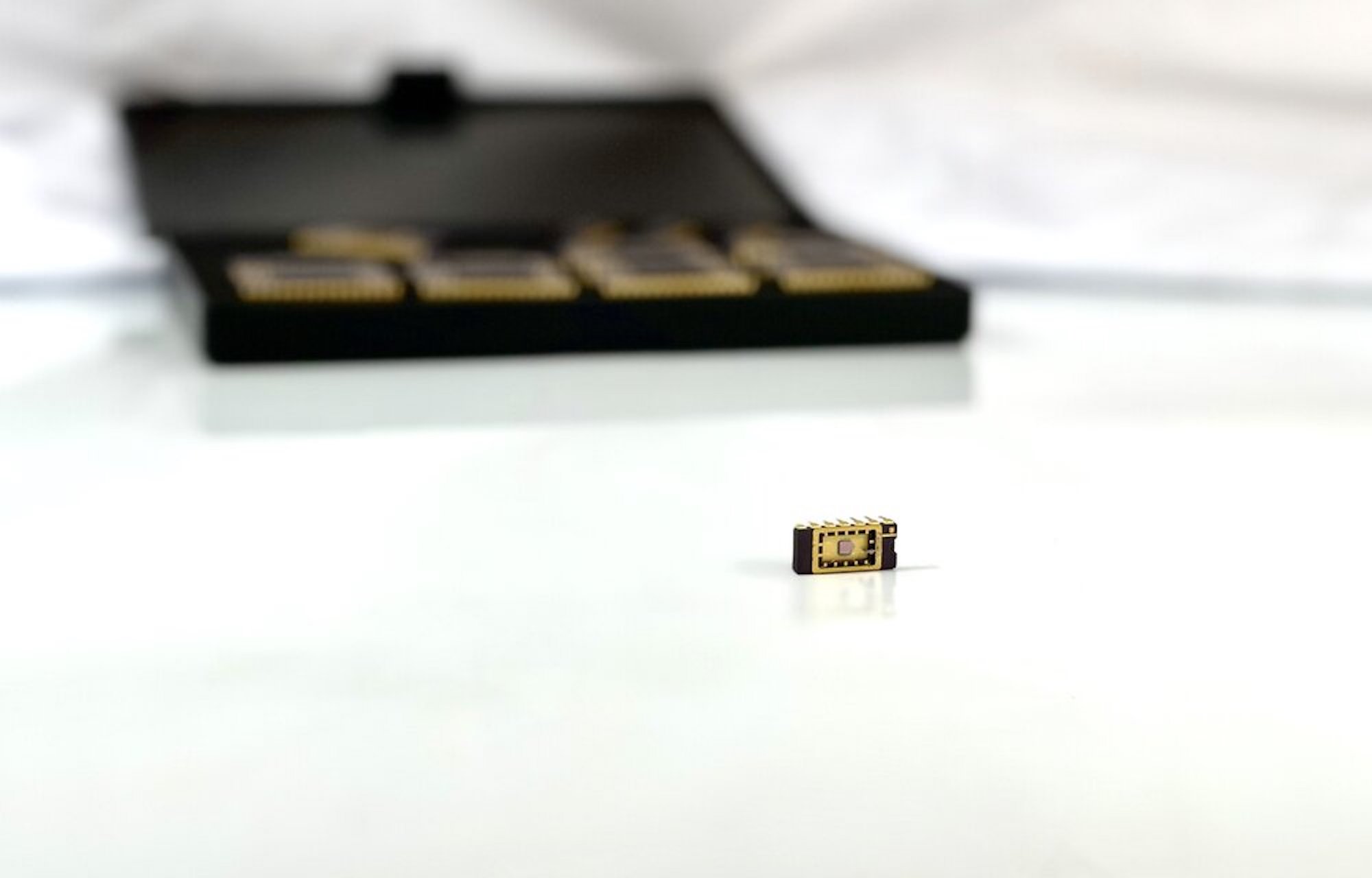
Limitless Possibilities
What if there was a low-power energy source, like a watch battery, that never needed replacing? Paul Thibado may have found that source in graphene, and he and others are working to share this discovery with Arkansas and the world.
Graphene, a nanomaterial comprised of a single layer of carbon atoms arranged in a honeycomb lattice structure, has been explored for a variety of uses in recent years, from water filtration to electronics and wearable technology. But Thibado, a professor of physics at the University of Arkansas, is working to harness its potential to produce energy – and not just any type of energy…clean, limitless energy, like wind and solar.
The possibilities for its use are nearly as endless as the energy it supplies, resulting in an exciting new way to think about powering technology. And the hub for its development is right here in the Natural State.

Good Vibrations
Thibado and his colleagues were studying the motion of graphene by laying sheets of the one-atom-thick material across a copper grid that acted as a scaffold when they observed something unexpected: as the planes of graphene absorbed energy from the surrounding environment, they moved like waves on the surface of the ocean.
This discovery became the impetus for creating a graphene circuit element, where a negatively charged sheet of graphene is suspended above a metal electrode. As the graphene flips up, it induces a positive charge in the top electrode, and when it flips down, it the charge flows out of the circuit, creating an alternating current.
 One atomic plane of graphite is graphene. Room temperature freestanding graphene is
in a constant state of motion. When arranged in a circuit, it naturally harvests ambient
energy – that is, energy from the surrounding environment – and its natural motion
is turned into electrical energy.
One atomic plane of graphite is graphene. Room temperature freestanding graphene is
in a constant state of motion. When arranged in a circuit, it naturally harvests ambient
energy – that is, energy from the surrounding environment – and its natural motion
is turned into electrical energy.

Following this discovery, Thibado’s team set out to “miniaturize” the energy harvesting technology and reproduce the essential components of the original experiment on a silicon chip. His current efforts in the development of this technology are focused on building a device he calls a Graphene Energy Harvester (or GEH). GEH uses a negatively charged sheet of graphene suspended between two metal electrodes. When the graphene flips up, it induces a positive charge in the top electrode. When it flips down, it positively charges the bottom electrode, creating an alternating current. With diodes wired in opposition, allowing the current to flow both ways, separate paths are provided through the circuit, producing a pulsing DC current that performs work on a load resistor.
 Thibado and four other authors had their study, “Charging capacitors from thermal fluctuations using diodes” published in Physical Review E in 2023.
Thibado and four other authors had their study, “Charging capacitors from thermal fluctuations using diodes” published in Physical Review E in 2023.
The Next Wave
With the scientific progress moving forward, NTS Innovations has stepped in to help bring Thibado’s discovery to market. The company, which specializes in nanotechnology, owns the exclusive worldwide license to develop Graphene Energy Harvesting Circuits (GEHCs) into commercial products. Because GEHCs are measured in nanometers, they are ideal for mass duplication on silicon chips. When they’re embedded on a chip in arrays, they can work together to produce higher levels of power output. They can also operate in all types of environments, making them particularly attractive for wireless sensors that are placed in locations where changing batteries is inconvenient. With GEHCs, components like tire pressure sensors, which alert drivers to low pressure as their batteries give out, would have self-powered energy and eliminate the need for replacement.
NTS Innovations, which is headquartered in Fort Myers, Florida has expanded into Northwest Arkansas to be closer to the technology that is developing through Thibado’s discovery. In fall of 2021, the company established offices in the Innovation Center at the University of Arkansas Research and Technology Park.

(Photo courtesy of NTS Innovations)
“Innovations and great ideas can come from anywhere,” said Tom Buzzell, chief operating officer of NTS Innovations. “I’m excited for the continued partnership with the U of A and opportunities for future discoveries that may apply to this technology or other areas that NTS Innovations has interest in developing.”
The proximity to Thibado’s team isn’t the only benefit to the company. Its location in Fayetteville has also allowed it to hire interns from his lab and has provided excellent access to the university’s experts involved in the nanotechnology and engineering fields.
“Graphene Energy Harvesting technology is one of the most exciting innovations that I’ve ever come across in my career,” said Don Meyer, founder and chief executive officer of the company. “We’re aiming to transform products, industries and lives, and this discovery paves the way for an incredible leap forward.”
For a more in-depth look at the science behind Thibado’s discovery, visit the Arkansas Research and Economic Development site.